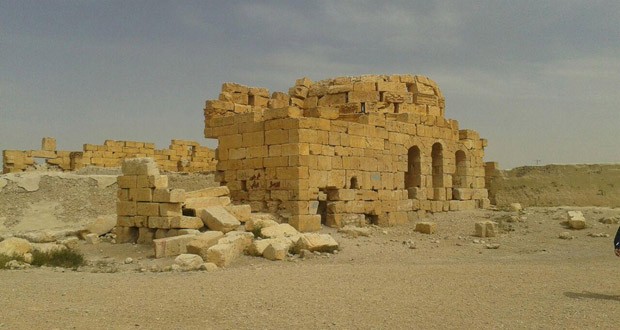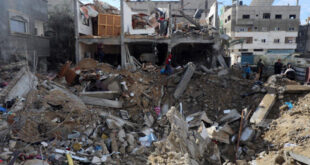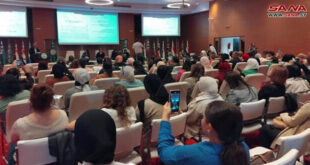Homs, SANA, Hawarin Village, 80 km to the southeast of central Homs province, is a pearl decorating the Syrian Badiya “Desert” with its significant cultural and historical treasures.
The village embraces many archeological monuments, yet it has been very difficult to unearth them as the houses of the village’s residents are located in the archeological part of the village.
Head of Homs Antiquities Department Farid Jabbour said the department is considering a study on moving the inhabitants of the village to other area in the village to be able to carry out excavations for unearthing the archeological antiquities.
A temple was built in the village in the past and it was transformed into a palace during the Umayyad reign and now it is called “Hawarin Fortress”, Jabbour added.
Seven churches were also built in the village throughout history, two of which still exist nowadays, one is called by the locals Ji’ara Church. The church used to be an ethnic temple during the Roman era and later it became a church.
Ji’ara Church was built of huge limestone and it is located 500 meters to the north of the village. The church consists of a central rectangular nave, two side corridors, a temple, and two chambers on the sides of the temple.
On the eastern part of the church’s building, a number of bases, a 120 cm-diameter miters and four meters-high walls can be seen. Homs Antiquities Department has carried out restoration works for the church according to a studied plan.
The second church which still exists in the village is al-Ruhban Church, which was built of a huge rectangular stone. In the middle of the church there is a wide courtyard and one can see a number of entrances to the west, south and north of the church.
Al-Ruhban Church is very huge and it embraces a central nave with two corridors and to the east of the church there is a huge temple. Marvelous miters were used in building the inside and outside of the church.
Jabbour indicated that the walls of the side chambers of the entrance still exist, in addition to the apse whose height is five meters, adding that it might be used in the past as a tower, naming it a “fortress”.
He indicated that there is a courtyard at the entrance of the fortress. The courtyard is rectangular and it consists of two rows of arches built on three columns in each row and inside the courtyard there is also an ornamented stone.
Due to the archeological importance of the village, the General Department of Museums and Antiquities has always been keen on unearthing its archeological monuments as it established a national excavation expedition from more than ten years ago, He added confirming that the expedition is still carrying out excavation works in the village.
R. al-Jazaeri/ Barry
 Syrian Arab News Agency S A N A
Syrian Arab News Agency S A N A





